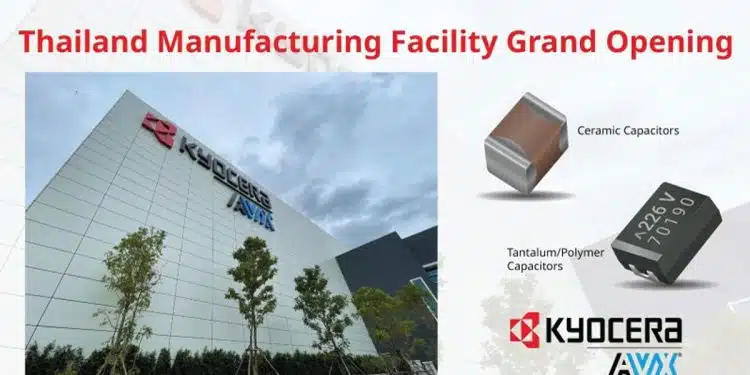KYOCERA AVX’s new flagship facility in Nakhon Ratchasima, Thailand, features 1.2 million square feet of state-of-the-art design, manufacturing, testing, storage, and distribution space, meets FM Global standards, and features walkable ceilings, full electrical power supply redundancy, and column-free production areas. The manufacturing facility expands the company’s ceramic and tantalum capacitors production capabilities.
KYOCERA AVX, a leading global manufacturer of advanced electronic components engineered to accelerate technological innovation and build a better future, has announced the grand opening of its $300 million advanced manufacturing facility for ceramic and tantalum capacitors in Nakhon Ratchasima, Thailand. The new facility features 1.2 million square feet of state-of-the-art manufacturing and warehousing space.
Deliberately designed as a safe and sustainable global facility for the production of ceramic and tantalum capacitors, the new KYOCERA AVX manufacturing facility consists of three separate buildings housing manufacturing and office spaces, break areas, a sports arena, a pavilion, and a cultural center for employees to practice Thai customs and gather for sponsored events.
The Nakhon Ratchasima facility will expand KYOCERA AVX’s global presence as a leading manufacturer of high-performance, high-reliability ceramic and tantalum capacitors designed to satisfy an extensive range of challenging electronics applications in the automotive, military, aerospace, defense, telecommunications, renewable energy, industrial, medical, consumer electronics, networking, and transportation industries. The construction process began in 2019, took more than six million man-hours to complete, resulted in zero reported injuries, and earned KYOCERA AVX both local and national recognition for its handling and prevention of COVID-19 during construction.
“We are proud to announce the completion of our new ceramic and tantalum capacitor manufacturing facility in Nakhon Ratchasima, Thailand,” said Jeff Schmersal, President, KYOCERA AVX. “The new facility represents an investment of more than $300 million USD and the achievement of a safe and sustainable manufacturing and distribution site that will further strengthen our commitment to supporting local economies, developing competitive, cutting-edge component solutions for an extensive range of electronic applications, and further expand the global production of our best-in-class products.”































